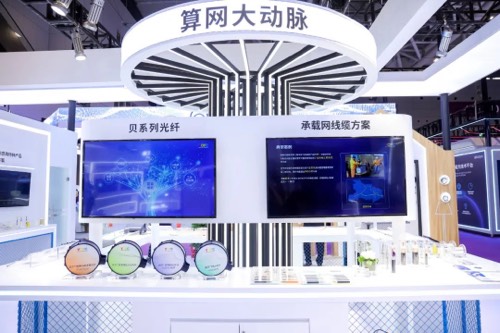New optical fibres to build the next-generation computing infrastructure are on the horizon.
Recently, China Mobile Interprovincial Backbone Transmission Network 400G OTN New Technology Experimental Network Equipment Centralized Procurement Project has concluded and the construction of the related network would ensue. This marks the latest advancement in Chinese basic telecom carriers' construction of new information and communication infrastructure since the era of 400G all-optical networks.

With the development of the digital industry and the digital transformation of industries in China, the digital economy has entered a new era with computing power as the core productivity. The supply and use of computing power are based on reliable network connection and optical networks are the key element for the development of computing power services and applications. In recent years, driven by the development of the "east data, west computing" project, the three major carriers have invested in high-speed all-optical computing power networks and achieved positive results. As the world's leading optical fibre and cable manufacturer and optical communication solution provider, YOFC has maintained close partnerships with the three major carriers in research on large-capacity and long-distance optical transmission technology. These cooperative efforts aim to promote the digital and intelligent transformation of optical networks, consolidate the development of the digital economy, and lay a solid foundation for the digital transformation and upgrading of traditional industries.
With the rapid development of the digital economy and increasing data traffic, what are the new requirements and challenges of high-quality computing power networks for optical fibres' key technological indicators, such as their performance and transmission capacity, in the 400G era and even the future 800G and Tbit era?
| Development of Optical Fibres for Computing Power Networks | ||
|---|---|---|
| Name of Main Optical Fibre | Main Characteristics | R&D/Commercial Application Progress |
| G.654.E fibre with ultra-low attenuation and large effective area | Larger effective area; lower attenuation; capable of reducing the number of repeaters; large transmission capacity; long transmission distance; supporting 400G systems | Commercial application and centralized procurement already launched |
| Multi-core fibre | Multiple physical channels for a single optical fibre; ultra-low crosstalk between fibre cores; low and transmission capacity; supporting SDM | Test Stage |
| Few-mode fibre | Using different modes that feature relatively large mode field areas; capable of increasing the capacity of optical transmission systems; supporting SDM | Test Stage |
| Hollow-core fibre | Simple structure; hollow-core light guide;wide transmission spectrum; ultra-low loss; transmission rate close to that of light | R&D stage |
| Communications Weekly www.ccidcom.com |
||
